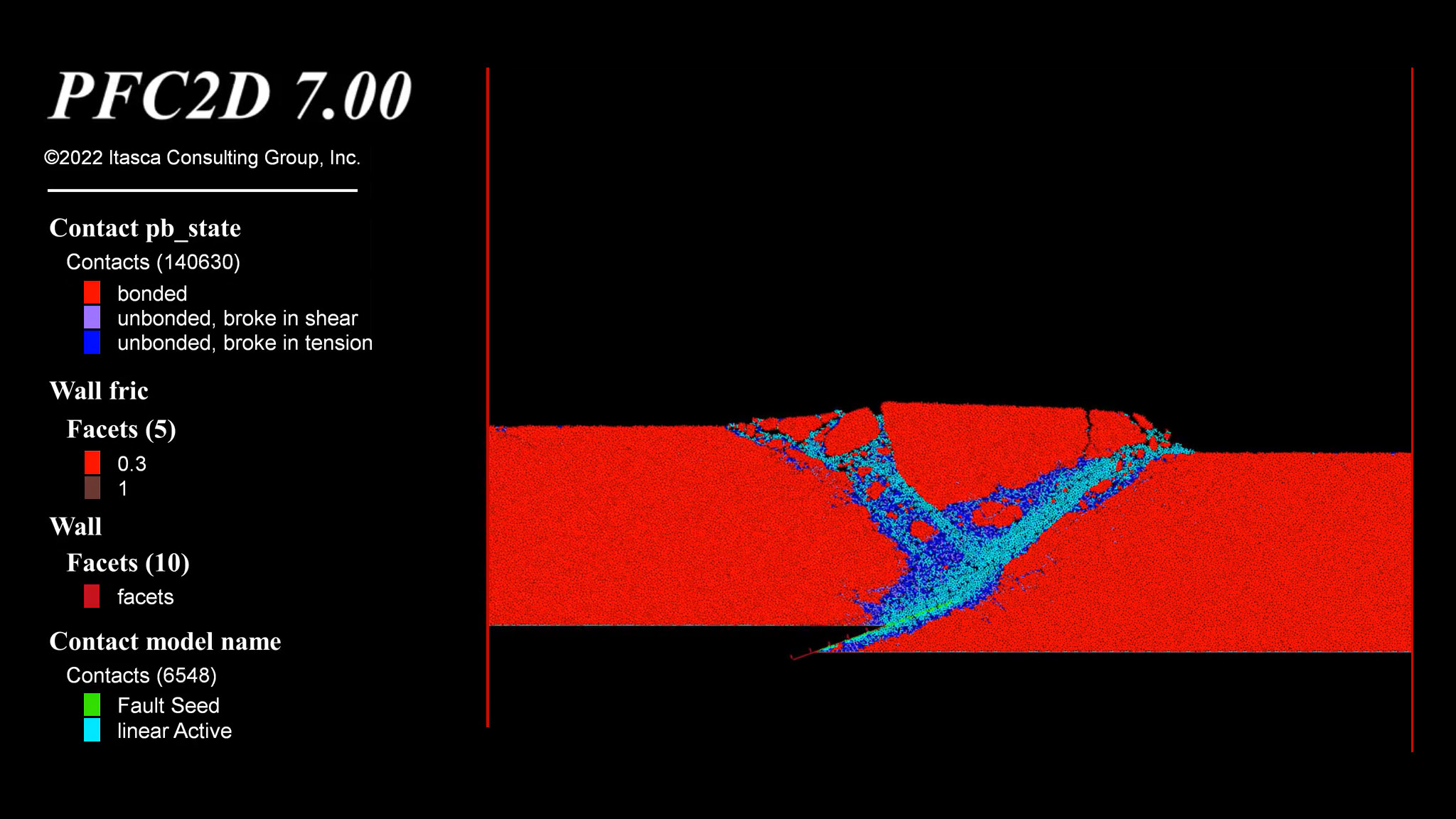Red Hat's OpenShift container platform (OCP) version upgrade on NERC [June 10, 2025, from 8:00 AM – 5:00 PM]


Particle Flow Code 2D Model (PFC2D v. 7.00) seeks to improve our understanding of the physical processes that control the style, distribution, and intensity of ground surface ruptures on thrust and reverse faults during large earthquakes. Their study combines insights from coseismic ground surface ruptures in historic earthquakes and patterns of deformation in analog sandbox fault experiments to inform the development of a suite of geomechanical models based on the distinct element method (DEM). They explore how model parameters related to fault geometry and sediment properties control ground deformation characteristics such as scarp height, width, dip, and patterns of secondary folding and fracturing. DEM is well suited to this investigation because it can effectively model the geologic processes of faulting at depth in cohesive rocks, as well as the granular mechanics of soil and sediment deformation in the shallow subsurface. They results show that localized fault scarps are most prominent in cases with strong sediment on steeply dipping faults, whereas broader deformation is prominent in weaker sediment on shallowly dipping faults. Based on insights from 45 experiments, the key parameters that influence scarp morphology include the amount of accumulated slip on a fault, the fault dip, and the sediment strength. They propose a fault scarp classification system that describes the general patterns of surface deformation observed in natural settings and reproduced in our models, including monoclinal, pressure ridge, and simple scarps. Each fault scarp type is often modified by hanging‐wall collapse. These results can help to guide both deterministic and probabilistic assessment in fault displacement hazard analysis.
To improve understanding of ground surface ruptures during large earthquakes
Combined study of coseismic ground surface ruptures and analog sandbox fault experiments to inform geomechanical models
Distinct Element Method (DEM)